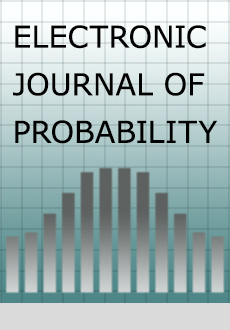Abstract
A large deviation principle is established for a two-scale stochastic system in which the slow component is a continuous process given by a small noise finite dimensional Itô stochastic differential equation, and the fast component is a finite state pure jump process. Previous works have considered settings where the coupling between the components is weak in a certain sense. In the current work we study a fully coupled system in which the drift and diffusion coefficient of the slow component and the jump intensity function and jump distribution of the fast process depend on the states of both components. In addition, the diffusion can be degenerate. Our proofs use certain stochastic control representations for expectations of exponential functionals of finite dimensional Brownian motions and Poisson random measures together with weak convergence arguments. A key challenge is in the proof of the large deviation lower bound where, due to the interplay between the degeneracy of the diffusion and the full dependence of the coefficients on the two components, the associated local rate function has poor regularity properties.
Citation
Amarjit Budhiraja. Paul Dupuis. Arnab Ganguly. "Large deviations for small noise diffusions in a fast markovian environment." Electron. J. Probab. 23 1 - 33, 2018. https://doi.org/10.1214/18-EJP228
Information





